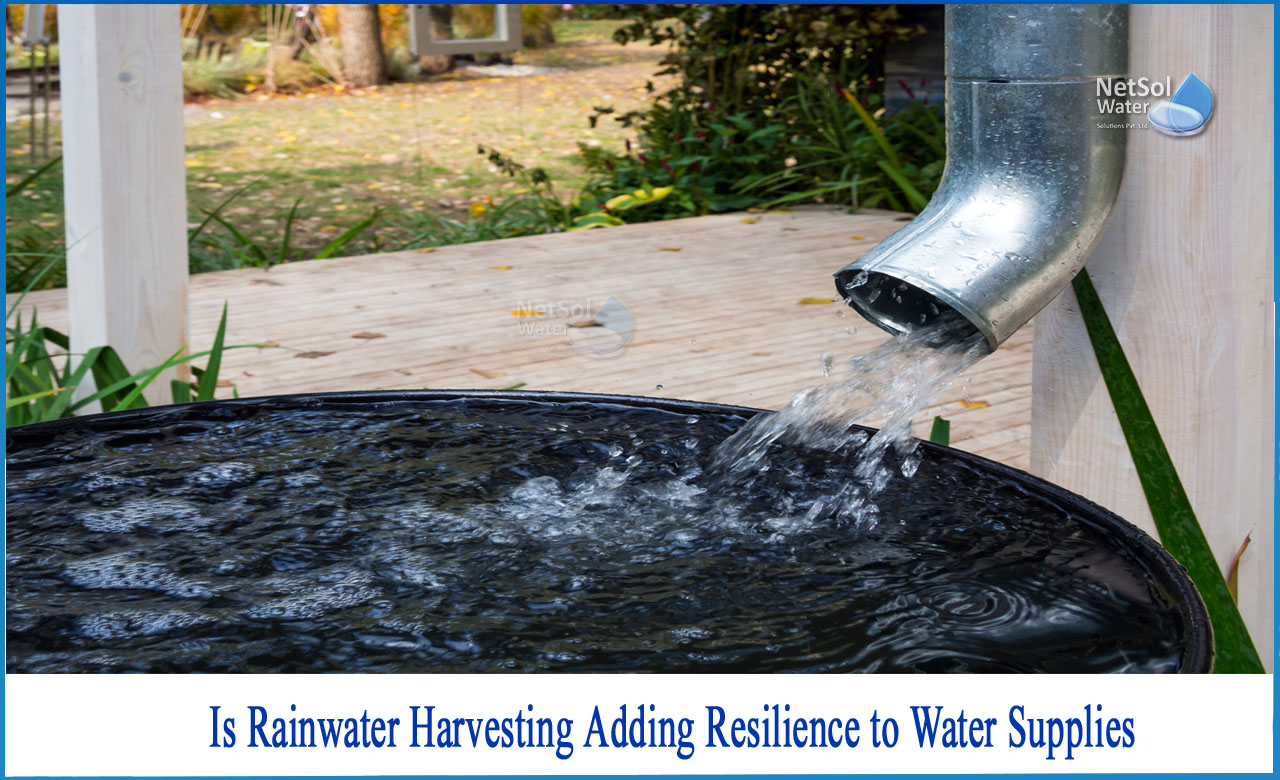Is Rainwater harvesting adding resilience to water supplies?
Rainwater harvesting (RWH) is the collection and storage of rainwater rather than letting it run off. Percolation directs rainwater from a roof-like surface to a tank, cistern, deep pit (well, shaft, or borehole), aquifer, or reservoir, where it seeps down and refills the groundwater supply. Nets and other items can also be used to gather dew and fog.
Rainwater harvesting differs from stormwater harvesting in that rainwater is collected from rooftops rather than streams, drains, streets, or other land surfaces. Garden watering, cattle watering, irrigation, residential usage with proper treatment, and domestic heating are just a few of its uses. The collected water might be utilized for long-term storage or groundwater recharge.
Rainwater harvesting is one of the simplest and oldest ways for households, as well as residential and household-scale companies, to self-supply water. Larger systems for schools, hospitals, and other structures, on the other hand, may incur expenditures that can only be met by owners, businesses, and government agencies.
Rainwater collecting components
All rainwater harvesting (RWH) systems have a few essential components in common:
a) The catchment region is where rainwater collects.
b) The conveyance, or conduit, system that directs water flow in a certain direction.
c) The filtration system and the first flush (a valve that guarantees run-off from the first period of rain is flushed away and does not enter the system).
d) Tanks and receptacles make up the storage space.
e) The recharge zone is where precipitation is collected and utilized to replenish groundwater.
How can we make RWH happen in cities?
Integration across sectors and disciplines is critical, as is rewriting city-wide master plans to enhance policy consistency. Working with local communities and other stakeholders to ensure that the knowledge and capacities necessary for successful implementation are in place is also important. Although there is still a long way to go, pioneering Asian examples provide a glimpse of what is possible.
Singapore: Harvesting rainwater was a natural extension of pre-existing measures to minimize, reuse, and restore water sources in Singapore, a city-state with limited water resources. Because high-rise buildings house around 86% of Singapore's population, rooftop water collection systems have been erected to maximize the use of rainwater and operate as a catchment.
Vietnam: Without a piped water supply, the groundwater in a village in Hanoi, Vietnam, is poisoned with arsenic, the river water is unclean, and bottled water is prohibitively expensive. Rainwater is the only source of drinking water. Several community-based rainwater collection systems are effectively supplying drinking water to inhabitants, including those found in public schools and hospitals.
Korea: According to studies in Korea, 'invisible water' - water contained in soil moisture, live plants, and the atmosphere – accounts for 90% of total water assets.
Cities must maintain and increase invisible water, which is achieved by minimizing the number of impermeable surfaces and retaining it in soil and plants as part of an urban greening process. Invisible water evaporates to form clouds, which then fall as rain, completing a brief water cycle.
Cities benefit from green infrastructure in two ways: it improves resilience against major rainfall events, and it reduces urban heat island effects by evapotranspiration of invisible water. Rainfall is intercepted and slowed by vegetation, lessening the severity of flooding concerns. Greenery also absorbs heat energy through evaporation, lowering the temperature.
China: China is one of the earliest adopters of the Sponge City concept in response to its urban water shortage crisis. The city aspires to become a water catchment area, boosting its usage of invisible water to regulate temperature. This has started with new construction projects implementing laws and standards for rainfall infiltration, retention, and storage. China has made improvements but maintaining a reliable and safe water supply remains a concern. Increasing urban green spaces, implementing Sponge City concepts, and upgrading city buildings are all effective ways to prepare for an uncertain future.
What is the bottom-line?
In metropolitan environments, RWH may be applied at all levels, from a single family to a community. The technology is versatile and flexible to a wide range of situations. It is employed in the world's wealthiest and poorest nations, as well as the wettest and driest places. During the rainy season, collected rainwater can be used to augment other water sources that have become limited or of poor quality, such as brackish groundwater or contaminated surface water. In times of drought or when the water table decreases and wells dry up, it's also a viable alternative and substitute.
How can Netsol Water help?
Netsol Water is a significant water and wastewater treatment firm in India, offering WTP, WWTP, STP, ETP, RO Plant manufacture, among other services including RWH techniques. The company creates equipment’s and is committed to providing practical solutions that help businesses flourish. We are committed to providing our valued customers with hands-on service, expert counselling, and training. We can customize various water and wastewater treatment systems as per client’s needs.
Netsol Water is Greater Noida-based leading water & wastewater treatment plant manufacturer. We are industry's most demanding company based on client review and work quality. We are known as best commercial RO plant manufacturers, industrial RO plant manufacturer, sewage treatment plant manufacturer, Water Softener Plant Manufacturers and effluent treatment plant manufacturers. Apart from this 24x7 customer support is our USP. Call on +91-9650608473, or write us at enquiry@netsolwater.com for any support, inquiry or product-purchase related query.



